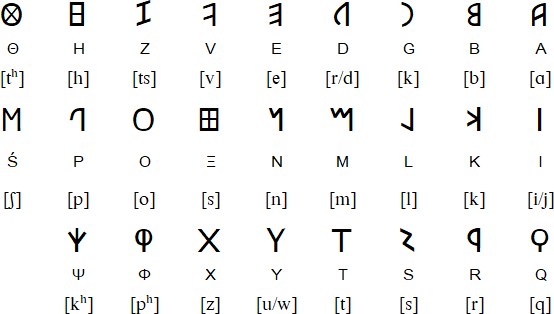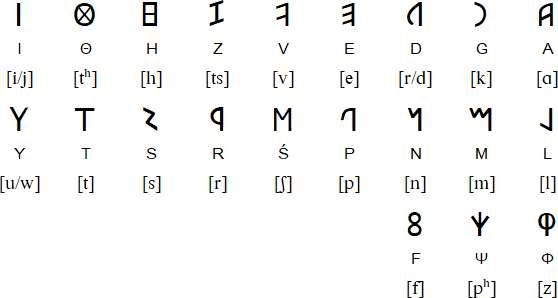Etruscan
The Etruscan language, spoken by the ancient Etruscan civilization of central Italy, is one of the most enigmatic and poorly understood languages of antiquity. It was used in the region of Etruria (modern-day Tuscany and parts of Umbria and Lazio) from around the 8th c. BC until its gradual assimilation into Latin around the 1st c. BC.

The Etruscan language is written using a script known as the Etruscan alphabet, which was adapted from the Greek alphabet but contains unique characters and lacks certain sounds found in Greek. Despite extensive efforts by linguists and scholars, much of the Etruscan language remains undeciphered due to the scarcity of surviving texts and the lack of linguistic connections with other known languages.

Nevertheless, inscriptions on tombs, artifacts, and religious objects provide valuable insights into Etruscan society, culture, and religious beliefs. Through comparative analysis with other ancient languages and ongoing research, scholars continue to make progress in understanding the Etruscan language, shedding light on one of the most intriguing civilizations of the ancient Mediterranean.
Alphabet
The Etruscan alphabet is a unique script derived from the Greek alphabet, with additional characters and modifications to accommodate the phonetic needs of the Etruscan language.

Dating back to the 8th c. BC, the Etruscan alphabet comprises around 26 letters, although the exact number may vary depending on regional variations and historical periods. Unlike the Greek alphabet, which was mainly used for literary and administrative purposes, the Etruscan script was primarily employed for inscriptions on tombstones, funerary urns, votive offerings, and other artifacts. The lack of extensive literary texts written in Etruscan poses significant challenges to modern scholars attempting to decipher the language, limiting our understanding of its grammar, syntax, and vocabulary.


Resources
